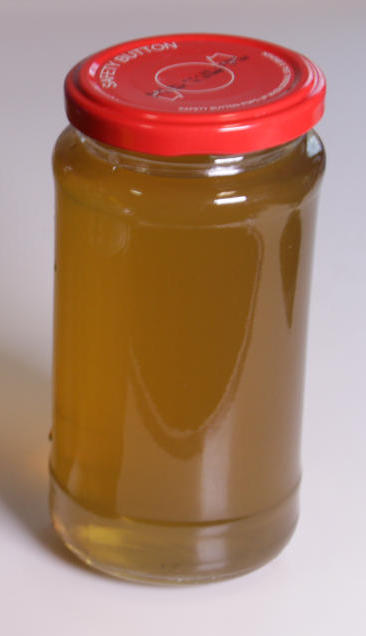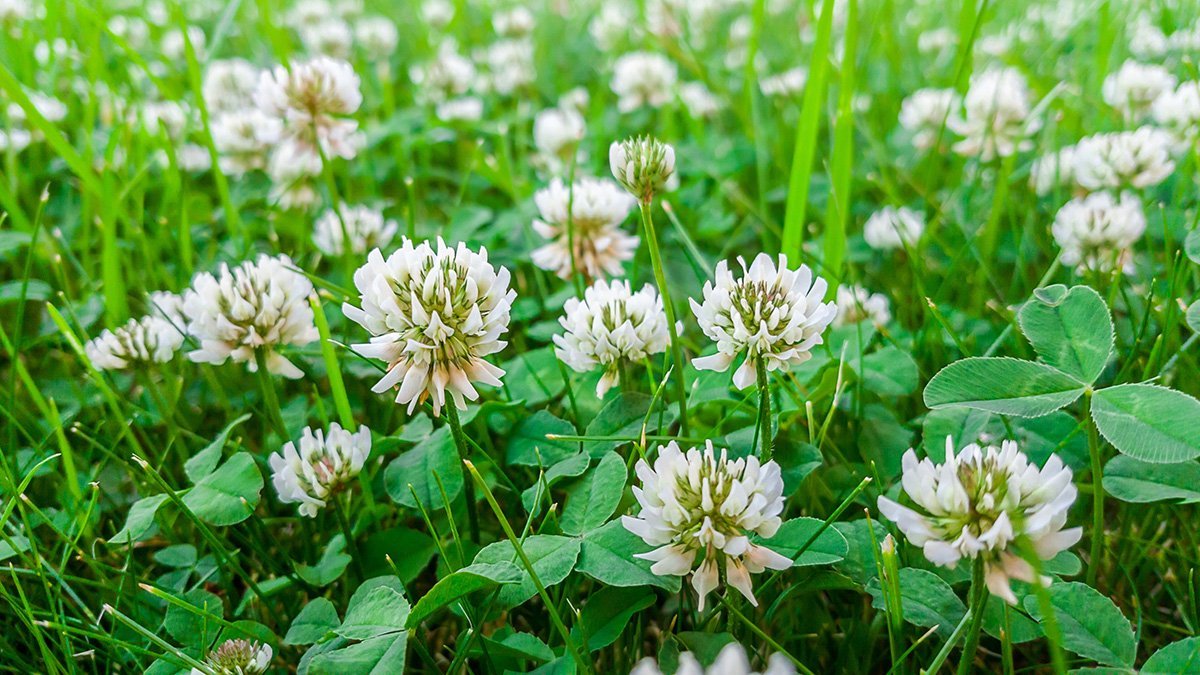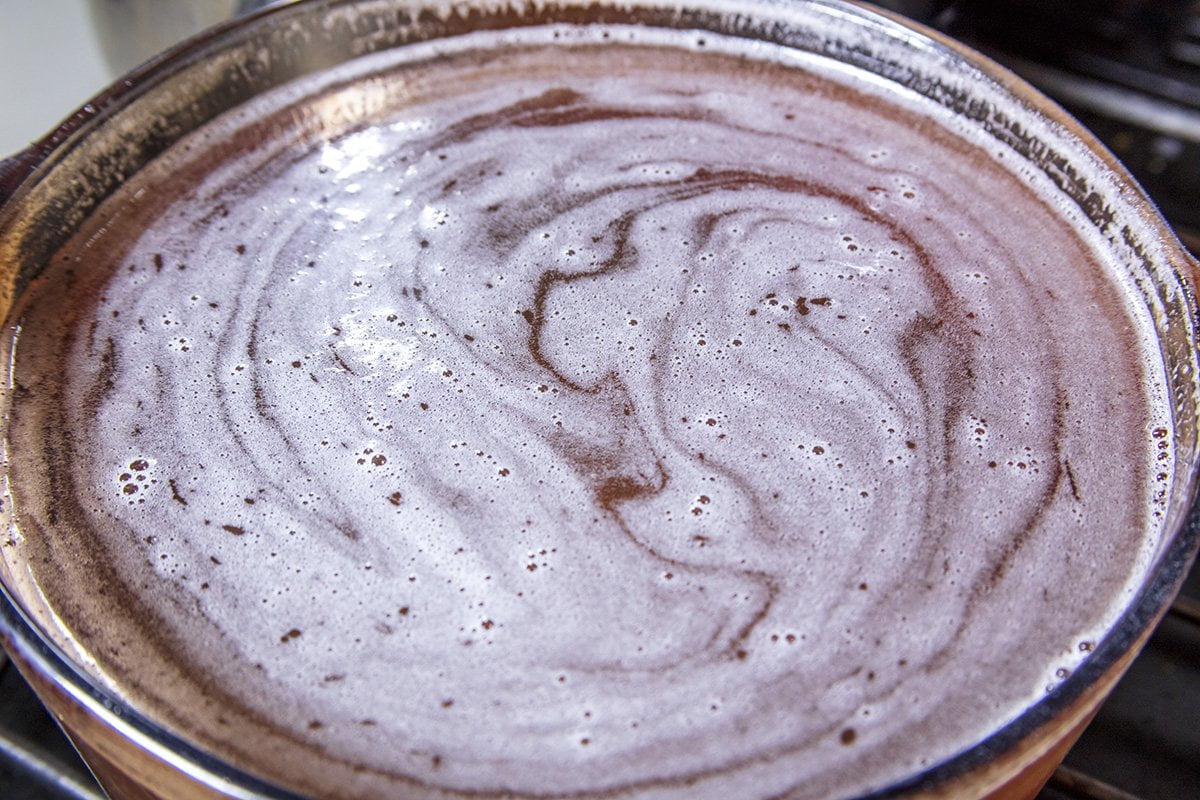
Looking to add a touch of whimsy to your culinary adventures? Enter white clover jelly, the enchanting concoction that will make your taste buds do the happy dance. Move over, ordinary spreads, because this playful jelly made from the blossoms of the white clover plant is here to steal the spotlight. In this article, we’ll delve into the captivating world of white clover jelly, from foraging the blossoms to crafting this irresistible treat.
Understanding White Clover
White clover (Trifolium repens) is a widespread edible plant in the US. We will explore its characteristics, geographical distribution, nutritional value, and potential health benefits. By understanding the essence of this remarkable plant, you’ll gain a solid foundation for harnessing its culinary and medicinal potential.
Description of White Clover
White clover, a member of the legume family, is a low-growing perennial plant with trifoliate leaves and small white or cream-colored flowers. Its botanical name, Trifolium repens, refers to the three leaflets that characterize its leaves. The flowers, which form spherical clusters, exude a sweet fragrance that attracts bees and other pollinators. With its adaptability and ability to fix nitrogen in the soil, white clover is often used as a ground cover in gardens and lawns.
Geographical Distribution and Habitats
White clover is native to Europe and has spread across many regions around the world. It thrives in temperate climates and can be found in meadows, pastures, lawns, and even along roadsides. Its ability to tolerate a wide range of soil types and its resilience in the face of grazing make it a ubiquitous presence in various habitats.
Nutritional Value of White Clover
White clover offers a surprising array of nutrients. Rich in vitamins such as vitamin C, vitamin A, and several B vitamins, it also contains minerals like calcium, magnesium, potassium, and phosphorus. Additionally, white clover provides dietary fiber and protein, making it a valuable component of a well-rounded diet. Its high protein content is particularly noteworthy, as it contributes to its potential as a food source.
Health Benefits of White Clover
Beyond its nutritional profile, white clover possesses potential health benefits. Traditionally, it has been used in folk medicine for its diuretic and expectorant properties. Some studies suggest that white clover may have antioxidant and antimicrobial properties, which could support overall health and well-being. However, it’s important to note that further research is needed to fully understand and confirm these potential benefits.
Gathering White Clover for Jelly-Making

By understanding how to identify and harvest the right plants, practicing sustainable harvesting methods, and preparing the blossoms properly, you’ll ensure the quality and abundance of your white clover harvest for making white clover jelly.
Identifying and Selecting White Clover Plants
It’s crucial to familiarize yourself with the distinct features of white clover plants. Look for trifoliate leaves and small, white, or cream-colored flowers arranged in spherical clusters. It’s important to ensure that you are indeed dealing with white clover and not a similar-looking plant. Take the time to learn about common look-alikes and compare their characteristics to avoid any misidentification.
Best Time and Season for Harvesting White Clover Blossoms
Timing is key when it comes to harvesting white clover blossoms. The ideal time to gather the blossoms is when they are in full bloom. Typically, this occurs during the late spring and early summer months, depending on your geographical location. Choose a day when the blossoms are dry, as dampness can affect the quality and flavor of the jelly. Ensure that the majority of the blossoms in the cluster are open, as this indicates their readiness for harvest.
Sustainable Harvesting Practices and Preserving Plant Populations
When harvesting white clover blossoms, it’s essential to prioritize sustainable practices to preserve plant populations and maintain ecosystem balance. Avoid over-harvesting from a single area, as this can negatively impact the clover population and the organisms dependent on it. Instead, spread out your harvesting efforts across multiple locations and leave enough blossoms behind to allow for pollination and seed production.
Cleaning and Preparing the Blossoms for White Clover Jelly Production
Before using the blossoms for making white clover jelly, it’s important to ensure they are clean and free from impurities. Gently rinse the blossoms under running water to remove any dirt, debris, or insects. Pat them dry using a clean towel or paper towels, taking care not to damage the delicate blossoms. It’s essential to remove any green parts, as they can contribute bitterness to the jelly. Focus on using only the blossoms themselves, discarding the stems and leaves.
White Clover Jelly Recipe

Below is the step-by-step process of transforming white clover blossoms into delightful and flavorful jelly. From gathering the necessary ingredients to boiling and canning the jelly, following this recipe will allow you to create a delicious white clover jelly that can be enjoyed in various culinary applications.
Overview of the White Clover Jelly-Making Process
To begin making white clover jelly, you’ll extract the natural sweetness from the white clover blossoms by infusing them in a liquid. This infusion will serve as the base for your jelly. You’ll then incorporate other ingredients, such as sugar and lemon juice, to enhance the flavor and texture. The mixture will be boiled, strained to remove any solid particles, and allowed to set into a smooth jelly consistency. Lastly, proper canning techniques will ensure the longevity and preservation of your white clover jelly.
Ingredients Required for Making White Clover Jelly
The primary ingredient for white clover jelly is, of course, the white clover blossoms. Additionally, you’ll need sugar, lemon juice, and pectin, which acts as a natural thickening agent. These ingredients work together to create the perfect balance of sweetness and acidity in the jelly. It’s important to use fresh and high-quality ingredients to achieve the best results.
Step-by-Step Instructions for Preparing White Clover Jelly:
- Extracting the Natural Sweetness: Infuse the white clover blossoms in a liquid, typically water, to extract their natural sweetness and flavor. This is done through a process of simmering the blossoms in the liquid, allowing the flavors to infuse.
- Incorporating Flavor and Texture Enhancers: Add sugar, lemon juice, and pectin to the infused liquid. Sugar provides sweetness, while lemon juice adds acidity and balances the flavors. Pectin helps the jelly achieve a desirable gel-like consistency.
- Boiling, Straining, and Setting the Jelly Mixture: Bring the mixture to a rolling boil, stirring continuously to dissolve the sugar and pectin. After the mixture reaches the desired temperature and consistency, strain it through a fine-mesh sieve or cheesecloth to remove any solid particles. This ensures a smooth jelly texture. Allow the strained liquid to cool and set, following the instructions provided with your chosen pectin.
- Proper Canning and Storage Techniques: Once the jelly has set, carefully transfer it into sterilized jars, leaving appropriate headspace. Process the jars in a boiling water bath to create a vacuum seal, ensuring long-term storage stability. Store the jars in a cool, dark place for optimal preservation.
By following these detailed instructions, you’ll be able to craft your very own white clover jelly, capturing the unique flavors and essence of this delightful wild plant. Get ready to savor the sweet and floral notes of white clover in a delightful jelly that can elevate your culinary creations to new heights.
To learn more about the edible and medicinal uses for white clover you can visit our article entitled “White Clover- Common Edible Plant“.
Be sure and visit our list of articles for more great info on sustainable living, as well as edible and medicinal plants.
FAQs:
Q: Can you make jelly from white clover?
A: Yes, white clover can be used to make a delicious jelly. The blossoms of the white clover plant are infused to extract their natural sweetness, and the resulting liquid is combined with other ingredients like sugar and lemon juice to create a flavorful jelly.
Q: What does white clover jelly taste like?
A: White clover jelly has a unique and delicate flavor profile. It offers a subtle floral taste with a hint of sweetness and a touch of tanginess from the lemon juice. The flavor can vary slightly depending on factors such as the specific white clover species and the infusion process used.
Q: Is white clover edible for humans?
A: Yes, white clover is edible for humans. In fact, it has a long history of culinary use in various cultures. The blossoms, leaves, and young stems of white clover can be consumed in different ways, offering nutritional benefits and culinary versatility.
Q: What does white clover taste like?
A: The taste of white clover is often described as mild and slightly grassy. The leaves have a fresh, earthy flavor, while the blossoms possess a delicate sweetness with subtle floral undertones. The taste can vary slightly depending on factors such as the plant’s age and growing conditions.
Q: What is white clover good for?
A: White clover has multiple uses and benefits. Besides being edible, it is also used as a natural ground cover in gardens and lawns due to its ability to fix nitrogen in the soil. White clover may have potential health benefits, such as antioxidant and antimicrobial properties, and it has historically been used in folk medicine for various purposes.
Q: Is white clover tea safe?
A: White clover tea is generally considered safe for consumption when prepared properly. However, it’s important to be cautious if you have any known allergies or sensitivities to plants in the legume family. As with any herbal tea, it’s recommended to start with small amounts and observe your body’s response before consuming it regularly.
Q: What does clover syrup taste like?
A: Clover syrup, often made from white clover blossoms, has a unique flavor profile. It typically offers a sweet and floral taste with subtle hints of honey and a touch of grassiness. The flavor can vary slightly depending on the specific clover species used and the preparation method.
Q: What parts of white clover are edible?
A: Several parts of the white clover plant are edible. The blossoms can be used to make jelly, syrup, or infused into teas. The leaves and young stems can be consumed raw in salads or cooked as a vegetable. It’s important to note that while these parts are edible, other parts of the plant, such as mature stems and roots, may be tougher and less palatable.
Q: What can I do with white clover?
A: White clover offers a range of culinary possibilities. You can use the blossoms to make jelly, syrup, or infusions for teas. The leaves and young stems can be added to salads, cooked as a vegetable, or used as a flavorful addition to soups and stews. Additionally, white clover can be used as a natural ground cover in gardens or to attract beneficial insects.
Q: How do you cook white clover?
A: White clover can be cooked in various ways. The leaves and young stems can be lightly sautéed or steamed as a side dish or added to soups and stews. The blossoms can be used to make jelly or infused into syrups and teas. It’s important to properly clean the plant parts and remove any tough or fibrous portions before cooking.